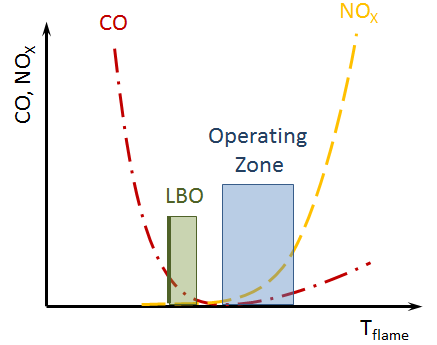TURBOmachinery REtrofits enabling FLEXible back-up capacity for the transition of the European energy system
The energy sector contributes two thirds of global CO2 emissions and is therefore crucial for future green growth in order to meet the envisaged targets for limiting global emissions. A substantial reduction in CO2 emissions can only be achieved through the use of renewable energy sources on a large scale, using in particular the most productive energy sources, wind and solar power. However, their intermittent occurrence poses a major challenge to the energy supply system, as the peaks of renewable energy supply do not overlap with those of demanded power. Since storage facilities in the required range are not yet available, additional methods of securing energy supply will be necessary. The provision of technologies that upgrade already installed power plants for a more flexible operation without leading to a deterioration in terms of operating time, costs and emissions is one possibility to provide the energy supply with the backup capacities required by higher shares of renewable energy sources and thus to guarantee a stable and elastic operation that at the same time allows a higher share of renewable energy sources.
The mission of TURBO-REFLEX is therefore to develop and optimize technologies for selected components of turbomachinery that can be used to upgrade both existing and new power plants for more flexible operation. In doing so, TURBO-REFLEX will also evaluate the impact that such technologies have on maintenance and operating costs at the power plant level through the transfer of component technology.
The lean blow off ("LBO") limit is a critical hurdle to further reducing the potential part load because the operating range is limited by the LBO limit. Jet stabilized premixed flames are predicted with blow off limits down to a combustion temperature of 1000°C-1200°C with or without the use of pilot flames. 1000°C-1200°C combustion temperature would mean compliant part load operation of equal emissions up to 20%-25%. Further blowdown limits of the burner are a basic requirement for the application of high power gradients. Therefore, it is expected that jet-stabilized premixed flames with better LBO limits will also allow power gradients higher than 40 MW/min.

EBIvbt at the Karlsruhe Institute of Technology will investigate jet flame blowdown with advanced combustion models. These models take into account basic geometric parameters as well as the effect of adjacent pilot flames. For this purpose, a 3D simulation model will be developed and experimentally validated at conditions close to the application. The turbulence chemistry interaction ("TCI") is considered on the basis of two different combustion models, where a transport equation of a reaction progress variable is solved in both models. The difference between the two models is the source term modeling. In the first model, the source term depends on the mixture fraction and the reaction progress variable itself. In the second model, which is based on a description of the turbulent flame speed ("turbulent flame speed closure", TFC), the source term depends on the laminar burning speed in addition to the local turbulence characteristics. In this way, the influence of flame stretching and local heat loss on the laminar burning speed, which is already evident in simple 1D model calculations, can be directly taken into account. By comparing the two models with experimentally determined data, it is shown which model is better suited for reproducing the blow-off limits.

